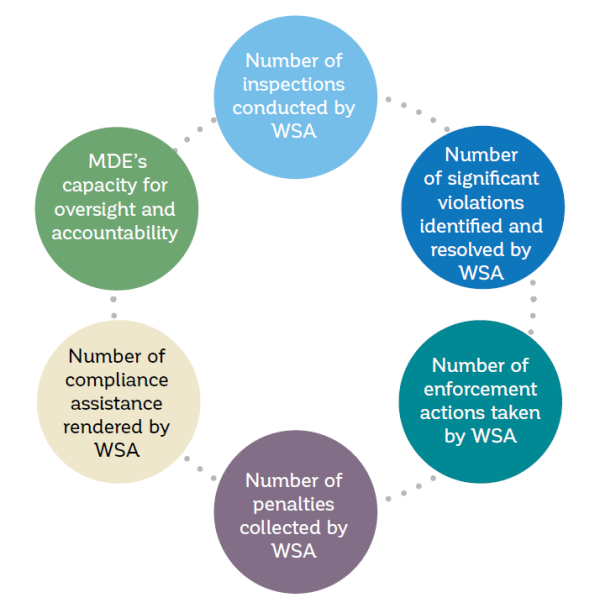What Is the CAP Enforcement Scorecard?

Contributors: Center for Progressive Reform, Chesapeake Bay Foundation, Chesapeake Legal Alliance, Environmental Integrity Project
The CAP Enforcement Scorecard analyzes measures taken by the Water & Science Administration (WSA) within Maryland Department of the Environment (MDE) to hold polluters accountable to rules that are meant to protect our waterways. The WSA, as the primary enforcer of clean water laws and permits in Maryland, plays an indispensable role in ensuring compliance with important environmental protections. While the public and the U.S. Environmental Protection Agency also have some rights and capacity to protect water quality, those are substantially limited by resources, laws, and agreements, leaving WSA as the primary entity determining the fate of the state’s water quality and related public health. This is why CAP members believe it is critically important that we hold WSA accountable to the Department’s larger mission.
The 2022 CAP Enforcement Scorecard, as the first of its kind, measures water-related enforcement trends over the last two decades. The key findings refer to three distinct time periods:
- FY2016 - FY2021
- FY2010 - FY 2015
- WSA’s Historical Average (FY2001 - FY2021)
Timing matters.The first time period covered by the Scorecard includes the last six years under Governor Larry Hogan's WSA (FY2016-FY2021). While Governor Hogan was elected in 2015, he was only in office for about a quarter of FY2015 (July 1, 2015 - June 30, 2016) and it takes time to institute new executive policies. The second time period includes the last six years under Governor Martin J. O'Malley (FY2010-FY2015), who was elected in 2006. The third time period is used to gauge MDE's historical average (FY2001-FY2021). |
The CAP Enforcement Scorecard considers six key indicators to demonstrate how WSA performed on clean water enforcement in 2021, and over the last two decades:

The 2022 Scorecard’s findings are based on data from MDE’s annual enforcement and compliance reports that reflect its activities, specifically as the data relate to pollution and wetlands regulated by the WSA. The 2022 Scorecard’s findings also use data from previous Maryland state budgets.
WSA’s “Core Programs”
|
The findings in this Scorecard exclude enforcement and compliance data from WSA’s Water Supply Program, which oversees dam failure and safety, Maryland’s drinking water supplies, water appropriations and use permits, and certifications for laboratories, well drillers, and operators and superintendents of water treatment plants, water distribution systems, and wastewater treatment plants.